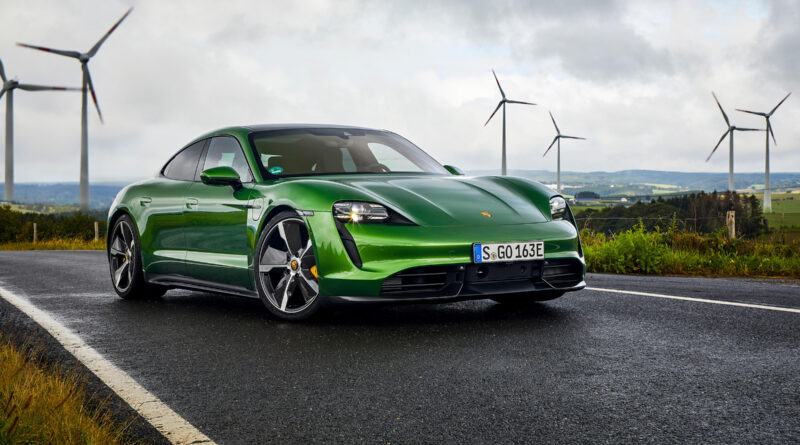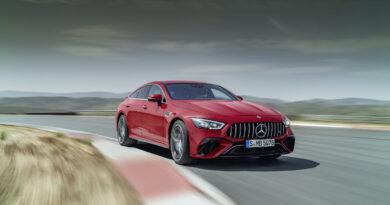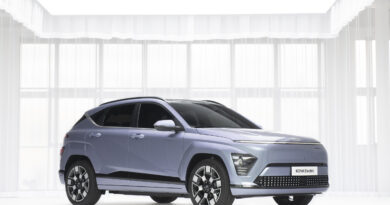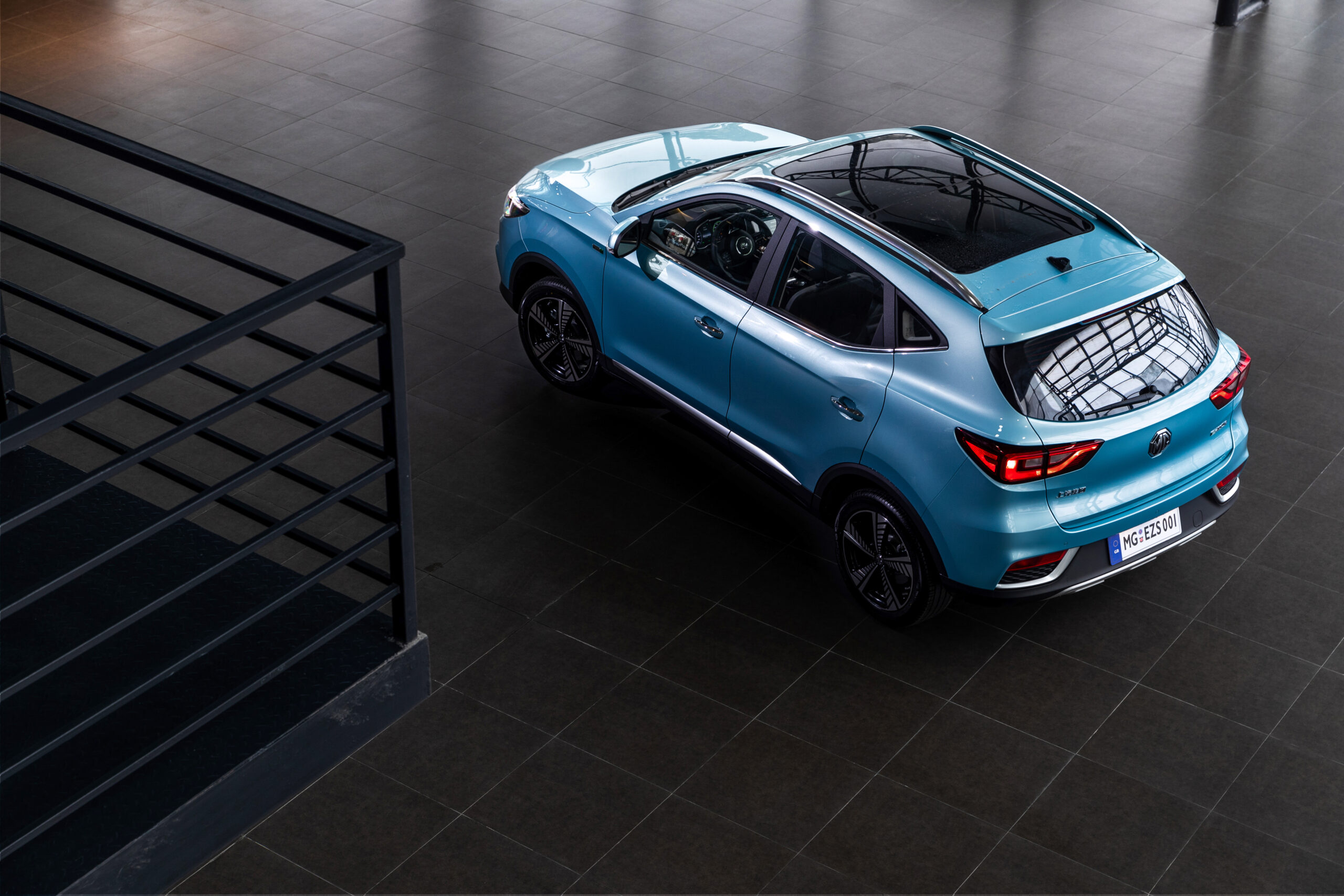2020 Porsche Taycan Turbo and Turbo S review
The first all-electric car from sports car maker Porsche delivers on performance and driving thrills.
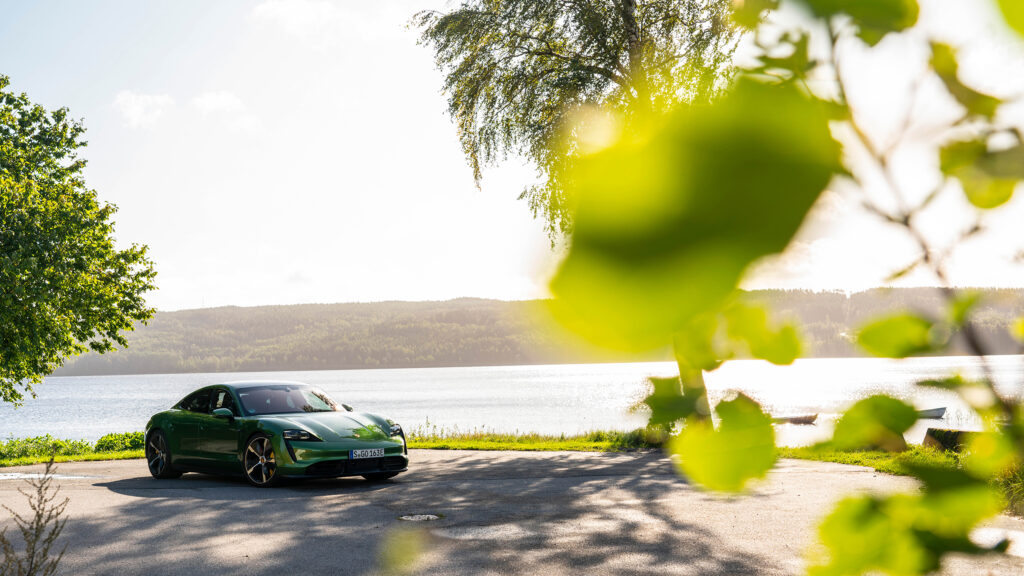
Introduction
The Taycan is Porsche’s first pure electric car but focuses as much on exciting performance driving as it does fuel-free motoring.
Key to its performance is a new 800V electrical system, double the voltage of other EVs.
Porsche may argue that there are no direct competitors, although the Tesla Model S comes fairly close as an all-electric rival with driving panache and plenty of pace.
You could also throw Porsche’s own Panamera into the competitor mix; sure, the Panamera is bigger, but the two share styling cues and the clever packaging of the all-electric Taycan means interior space is not wildly different.
Value
The Taycan doesn’t arrive in Australia until late 2020. It will initially be offered in three models: the Taycan 4S, Taycan Turbo and Taycan Turbo S, each getting progressively quicker and more expensive.
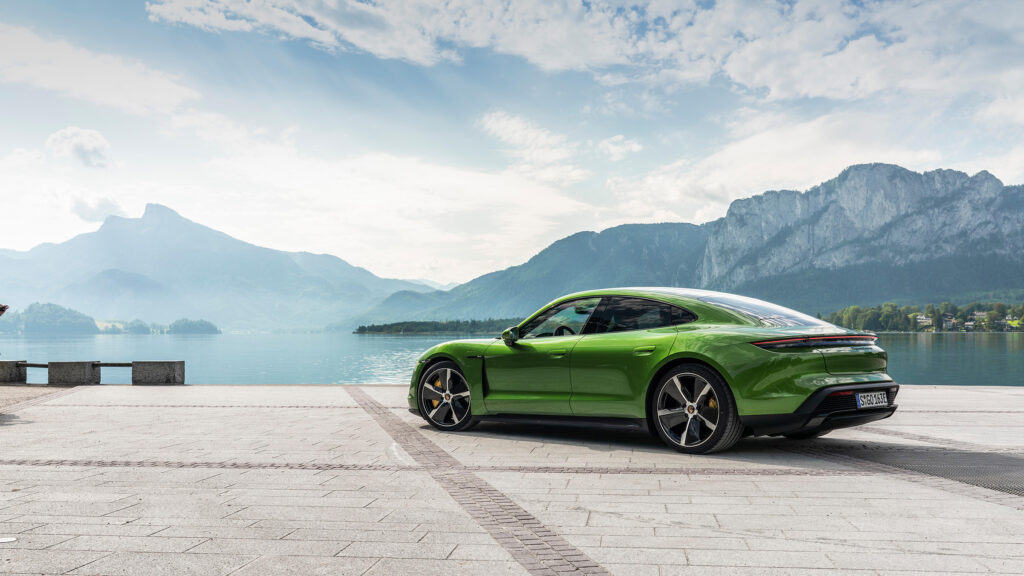
While the Taycan doesn’t have any turbos, the model names are a nod to other Porsches, in turn giving a clue to what could be join the lineup in future.
Pricing kicks off at $191,000 (plus dealer and on-road costs) for the Taycan 4S – read our full review of the Porsche Taycan 4S here – which gets a 360-degree camera, smart key entry, heated steering wheel, heated and ventilated front seats, quad-zone ventilation, Bose audio, navigation and Apple CarPlay and Android Auto Connectivity. It’s powered by two motors combining to make 390kW.
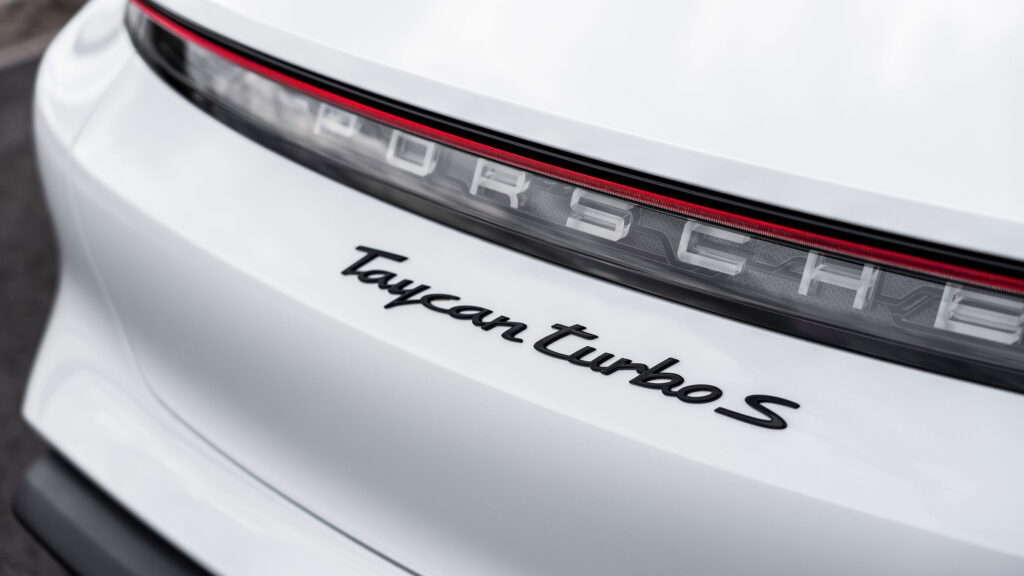
The Taycan Turbo adds adjustable dampers to the mix and more power (500kW) for $269,100.
The Taycan Turbo S tested here is a $339,100 proposition and the main benefit is even more power (up to 560kW).
All three have a quartet of digital displays: a 16.8-inch curved display for the instruments, a 10.9-inch one for the infotainment and driving functions, an 8.4-inch display with haptic feedback for ventilation and ancillaries, and a 5.9-inch display in the rear seats to control the ventilation.
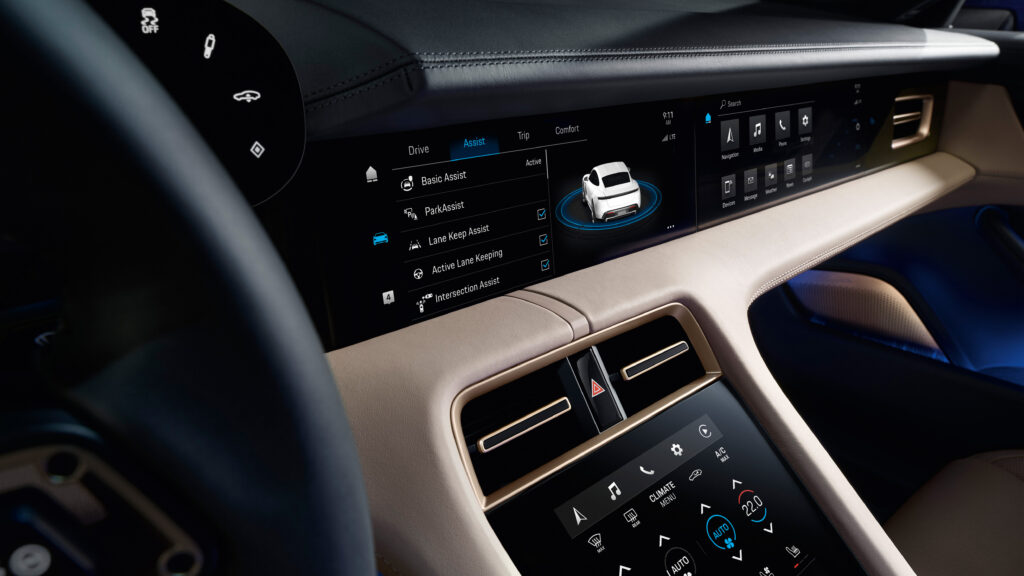
There’s the usual spread of options allowing you to spend plenty more, including beefier Burmester sound systems ($9630). One of the more interesting is yet another colour touchscreen ($2150), this time in front of the front-seat passenger, just in case they don’t want to look a few inches to their right to see the centre screen with mostly the same information…
Inside the Porsche Taycan
It’s easy to draw comparisons to the Porsche Panamera, both on styling cues and the basic four-door silhouette.

But there are notable differences. The Taycan is smaller and it has a more traditional boot over the Panamera’s hatch.
There’s also less back seat space, although the Taycan makes impressive use of what is available. The clever void in the underfloor battery pack to allow more legroom for those in the rear is indicative of the clever use of every millimetre.
A four-seat configuration is standard or for $1000 you can option a slender middle seatbelt, a position best left to slim people.
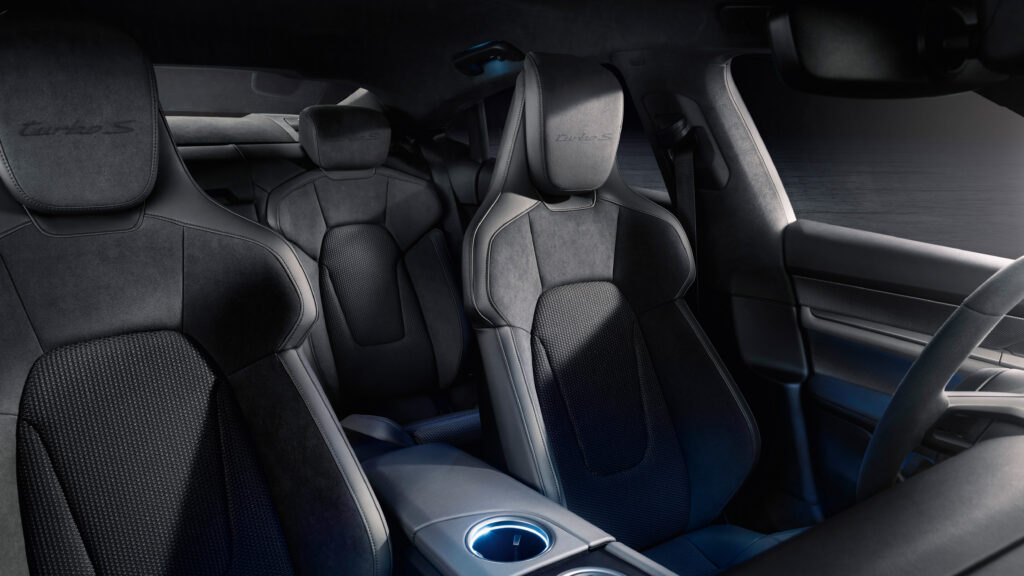
Attention to detail is also terrific, with quality finishes and materials and enough screens and displays for all manner of information – and as a none-too-subtle reminder about the tech infused within.
Among the gadgetry is a healthy mix of Porsche tradition, including circular gauges as part of the digital instrumentation (although without the tachometer that continues as an analogue display in other Porsches). There’s also an optional analogue stopwatch as part of the Sports Chrono pack.
It falls short of perfection, though, especially with storage. An odd space below the centre console is useless you option the storage pod that slots within it.
And the lid for the centre console is ever ready to bash the driver’s elbow when raised, its awkward positioning far from ideal. That it doesn’t stay fully open when raised is curious.
Performance and efficiency
There are two AC synchronous electric motors, one at the front and one at the rear. Each is part of an 800V electrical architecture that allows Porsche to use thinner wires, in turn reducing weight – and making things quicker.
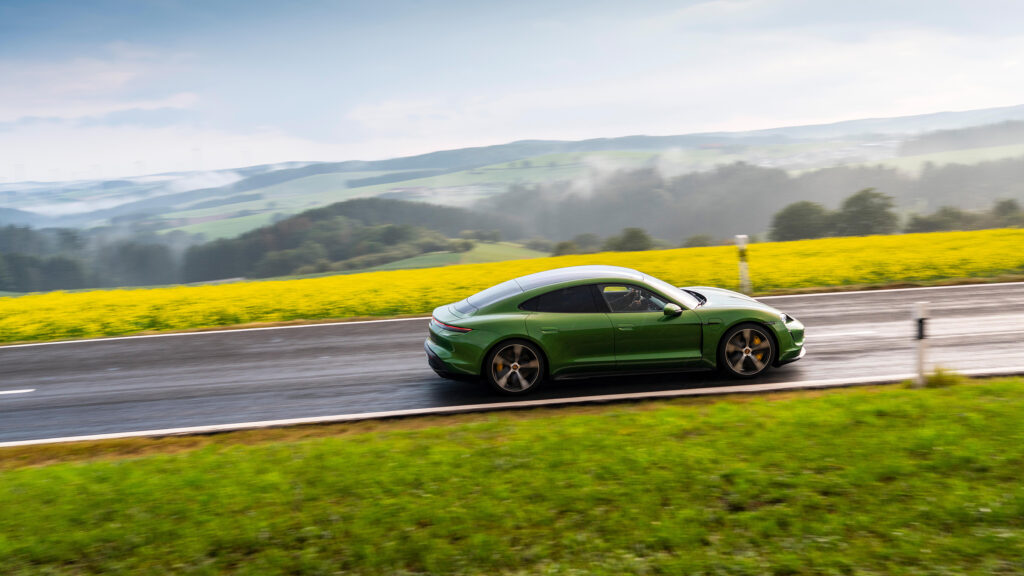
The one at the rear is larger and hooked up to a two-speed automatic transmission to allow for higher speeds before the electric motor stops increasing revs.
It’s an interesting setup and one that adds some character to the acceleration. Floor the throttle and the Taycan snicks into its second gear at around 75km/h, the slightest of interruptions to the otherwise unerring thrust the only hint of the mechanical shift.
Downshifts as you come to a standstill are often less elegant, although it’s a small price to pay for that acceleration – and the claimed 260km/h top speed (we nudged an indicated 269km/h on a German autobahn).
There’s a noticeable difference in the response between Range/Normal/Sport modes and Sport Plus. In the latter there’s no torque limiting to throttle applications, the full whack of pulling power (850Nm in the Turbo and 1050Nm in the Turbo S) available as soon as you press the throttle.
More impressive is how succinctly it transmits all that grunt to the ground. Four-wheel drive clearly helps, but there’s a brilliantly fast traction control system that makes thrusting out of hairpin corners faster than we’ve experienced in any supercars.
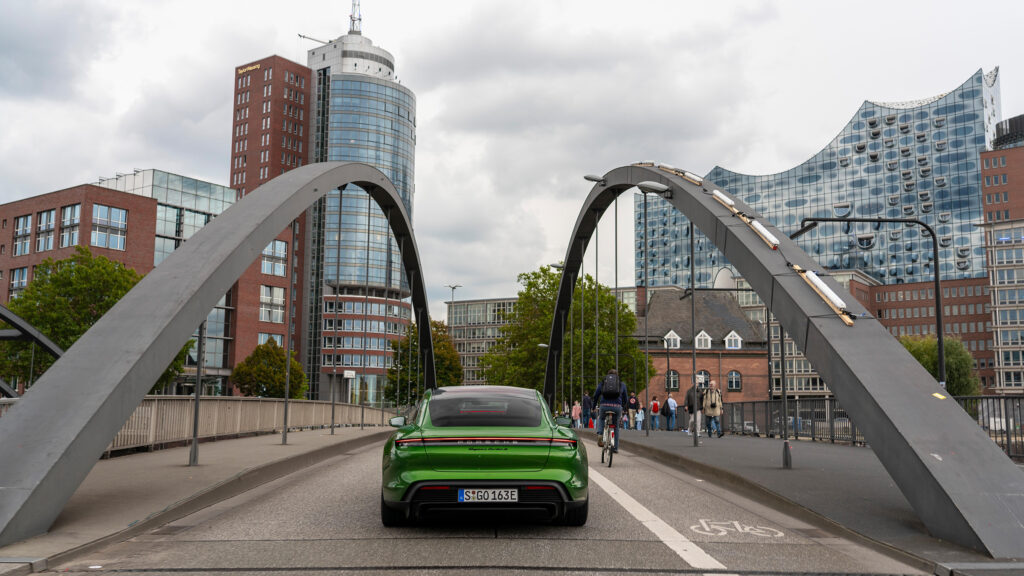
One thing the Taycan lacks is that raw, purposeful engine note Porsche has nailed in its 911 sports cars. Instead things are eerily quiet, albeit with some characteristic whirring when accelerating hard. You can dial up the Porsche Electric Sport Sound designed to up the emotion, although it sounds a bit too computer game and lacks the authenticity some may crave in a Porsche.
Don’t go draining the batteries too much, though – at least if you want that head-banging performance (yes, it will bang your heads into the headrests).
Below 30 percent battery capacity there’s a slight performance drop-off and it’s more noticeable as the charge depletes.
Charging the Porsche Taycan
The Taycan has an overall capacity of 93kWh and a usable battery capacity of 83.7kWh, something claimed to provide up to 450km of driving range in the Turbo. The Turbo S travels slightly less – the WLTP range claimed at 412km – due to its broader, stickier tyres.
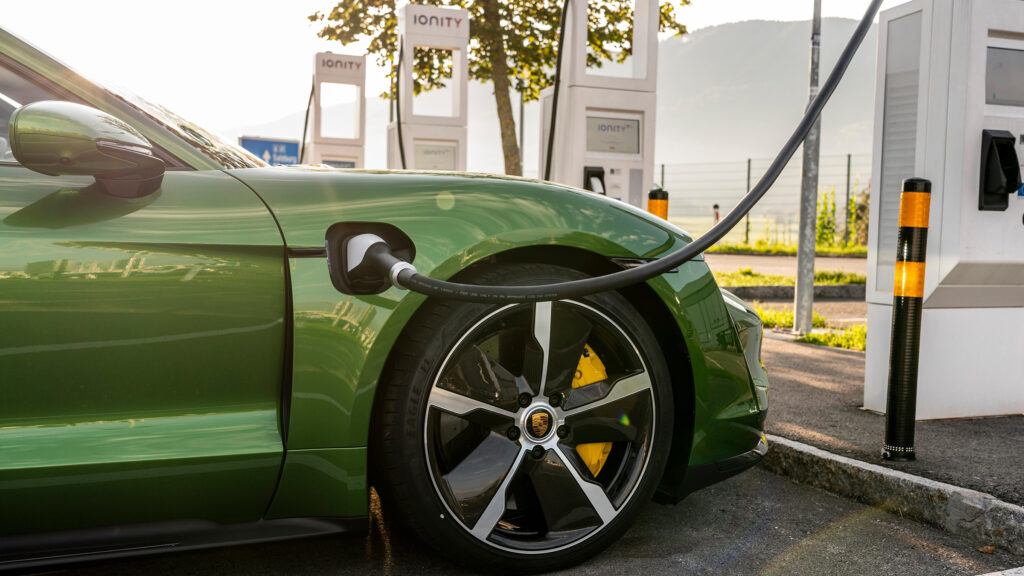
Claimed energy consumption is 26.9kWh/100km, although high speed blasts will have you using much more than that.
Our experience over 850km of German roads suggests you’ll have to steer away from those launch control starts (and autobahns) if you want to achieve those figures. We typically used between 25kWh/100km and 30kWh/100km, the latter with plenty of aggressive driving. So, expect something between 300km and 400km for everyday driving.
As for charging, there are two charge ports – one on each side of the car just behind the front wheels – each with a Type 2 plug allowing AC charging up to 11kW. So expect about eight hours for a full charge.
The charge port on the passenger’s side also includes a CCS combo plug adding DC charging functionality. It’s currently rated to accept up to 270kW of charge, which Porsche says will allow a charge from 5 to 80 percent in 22.5 minutes. We trialled it with one of the (Australian) Ionity charging stations in Europe and saw a charge peak of about 200kW before it started throttling back the charge power as the battery was topped up.
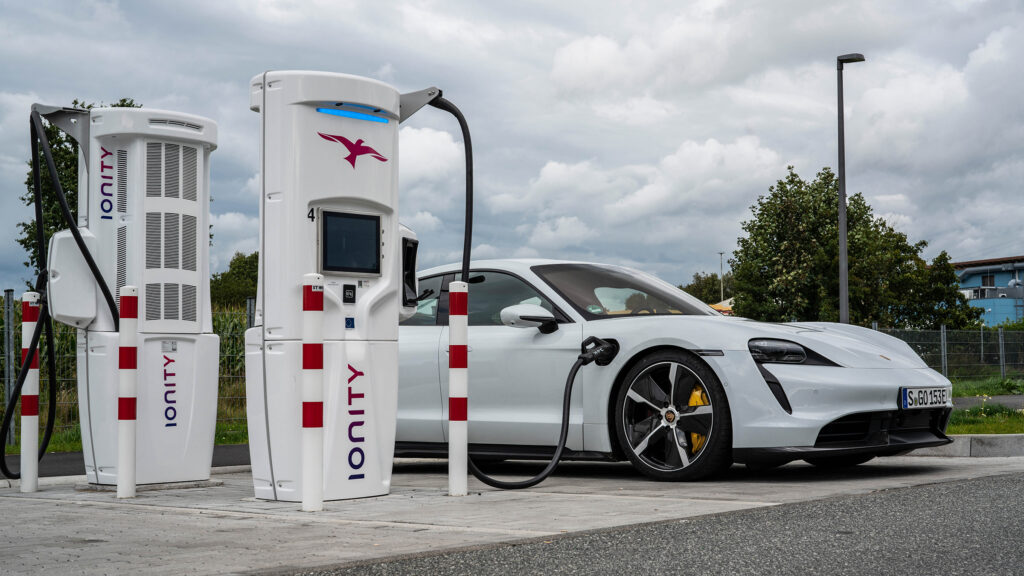
Charging from the high-output 400V chargers common in Australia is limited to 150kW.
Porsche says a software update could enable bidirectional charging down the track, subject to infrastructure suitability and customer demand. That would allow the car to feed back into the grid or power your house.
Ride and handling
Just a few corners is all it takes to establish the Taycan is primed for pace – and precision.
One key ingredient is a 650kg battery pack in the floor, something Porsche says gives it a lower centre of gravity than the legendary Porsche 911.
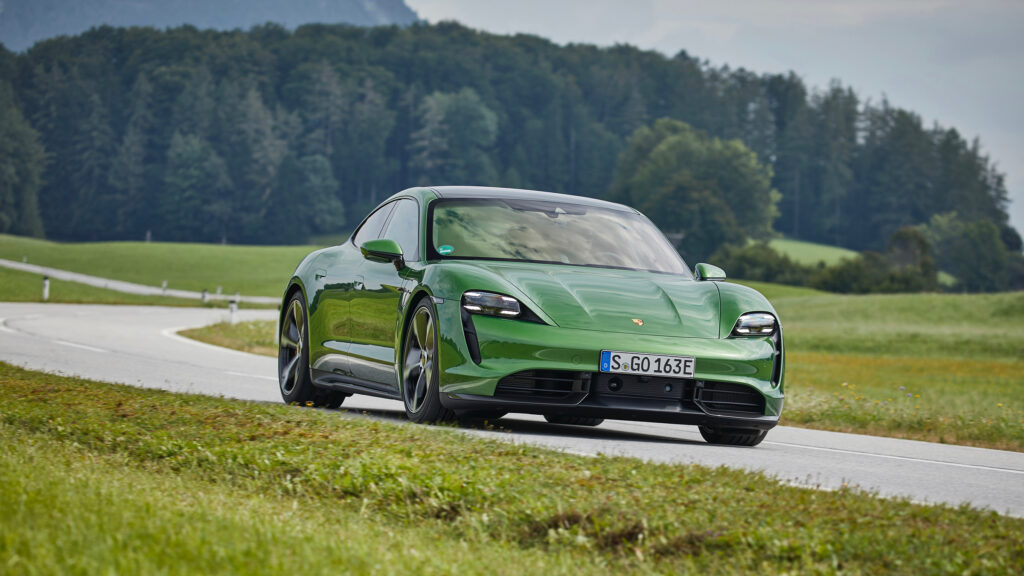
The result is a car that sits remarkably flat and stable through corners, setting the foundations for
Fluid and accurate steering adds to the dynamic appeal, one that encourages you to explore its talents.
That the suspension deals admirably with bumps reasserts its talent; the ride is firm but not uncomfortable.
Porsche Taycan party tricks
Launch control is where the Taycan is at its most brutal, using its full thrust to top 100km/h in 2.8 seconds. As with all Porsches, that’s a conservative figure, engineers quietly admitting the car will likely sneak in under that time in the right conditions.
While immense torque plays a big role, there’s a temporary power hit to kick things along. Porsche allows up to 2.5 seconds of additional power soon after launching. That lifts the 460kW power peak to 500kW in the Turbo and 560kW in the Turbo S.
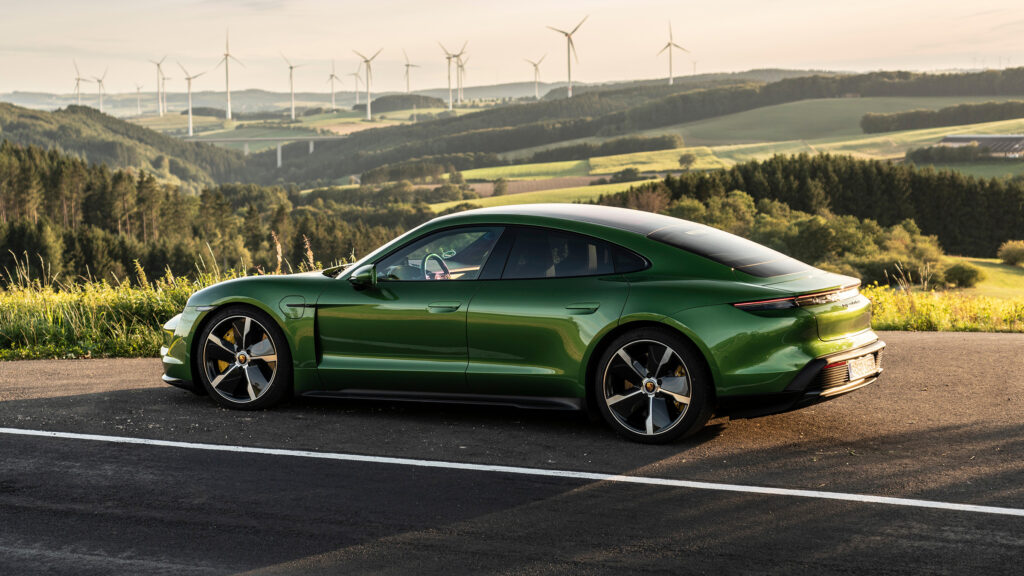
Why no power boost in other situations? “Thermal management” is the technical answer, which roughly translates to excessive heat build-up in the batteries if you send that many electrons through the system for too long.
Safety
Passive and active safety gear, independent ratings, issues, what it misses out on, etc
No independent safety ratings for the Taycan, but it comes with plenty of gear to help avoid a crash.
Whereas Porsche makes some advanced safety features optional on some vehicles, the Taycan is lavished with the full active safety fruit.
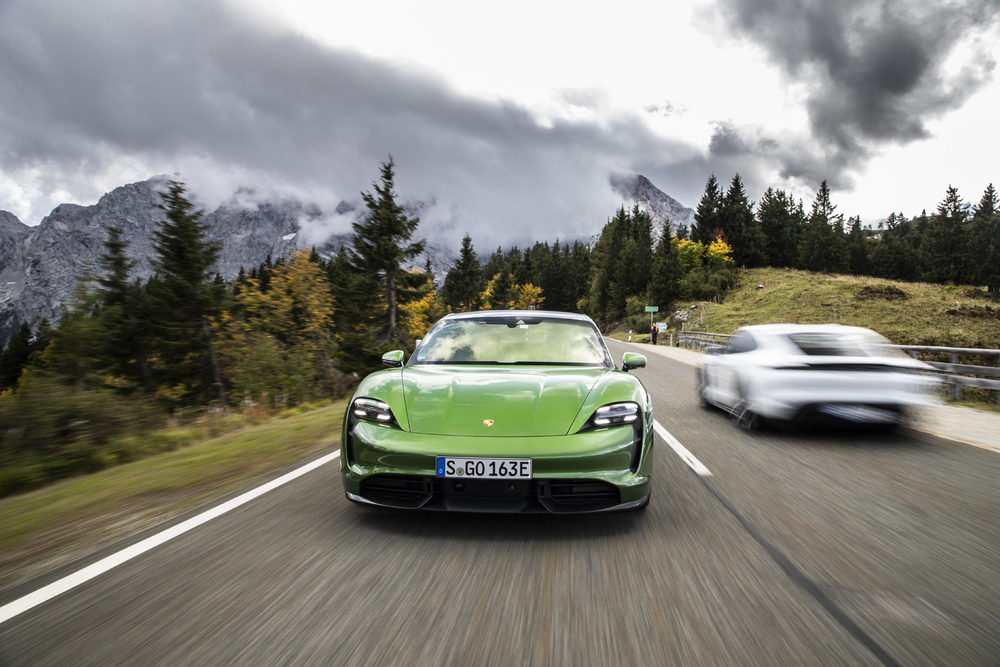
There’s active cruise control, auto emergency braking, lane keep assistance and blind spot warning.
Porsche Taycan: The verdict
The Taycan takes a formula created by Tesla and hones it with more power and punch and lashings of Porsche DNA. Key to its immense talent is cornering and braking abilities thoroughly in keeping with the sporty Porsche ways.
The Taycan is as uncompromised as electric performance comes – for now.
Porsche Taycan Turbo S specifications
Price: $339,100, plus dealer and on-road costs
Basics: EV, 4/5 seats, five doors, sedan, four-wheel drive
Range: 412km (WLTP)
Battery capacity: 83.7kWh
Warranty: 3 years, unlimited km
Battery warranty: 8 years, 160,000km (70 percent guarantee)
Motors: 2 (front and larger rear), 460kW (560kW for launch control starts)/1050Nm
Transmission: 2-speed automatic (rear motor only)
Energy consumption: 26.9kWh/100km
AC charging: 11kW, Type 2 plug
DC charging: 270kW, CCS plug
0-100km/h: 2.8 seconds
Top speed: 260km/h

